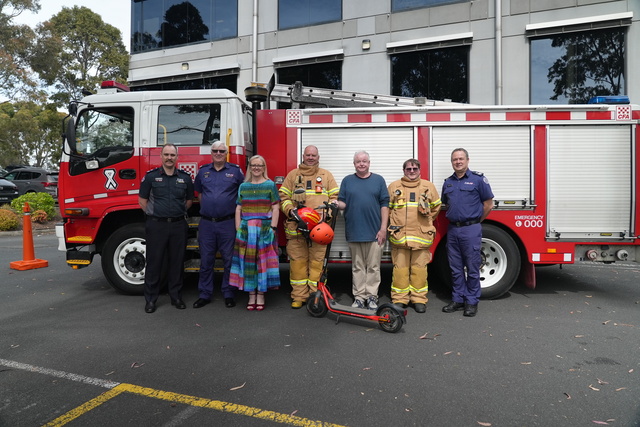We hear daily of the difficulties Australians are facing due to the rising cost of living, interest rates and the measures being put in place to notionally reduce inflation, but it seems, out here in Casey, that these difficulties have targeted us – our community – and that we are suffering more than most.
In one day, this week, here at Casey North Community Information and Support Service, we met with a 54-year-old lady who recently lost her job and is now living in her car with her two dogs. We had no housing or even shelter options to offer.
A young mother came to us for help to purchase food. She had her primary school aged child with her, unable to send him to school without the lunch she had no way of supplying.
A family that are paying 60 per cent of their income in rent; it is hard to imagine that the vouchers we gave them to purchase food, assistance to apply for a utility relief grant and part payment of their phone bill will provide a permanent solution for them.
Or the tragic case of a young fellow with ongoing mental health illness, who is struggling to survive on Job Seeker, has no employment prospects, but has no way of paying for the mandatory consults required with a psychiatrist or clinical psychologist needed to prove his eligibility for a disability pension. Wait times for those very few providers that will supply this service for free are now in excess of two years out here.
While the faces change, we are hearing this story in a variety of iterations, hundreds of times each week.
It may seem that these are those unlikely to be fuelling inflation with their ‘extravagant spending’, but they do seem to be the ones bearing the brunt of the current cost of living increases and critical affordable housing shortage.
Sadly too, it seems that their plight may well worsen in the near and foreseeable future. They are already struggling to eat, and most are not able to afford to heat their home – that is those that have a home. What further sacrifices should they be forced to make for the ‘good of all’?
It is important to realise that those in this group are not resilient, they have no reserves and cannot pass their financial pain on to their tenants, reap the benefits of the huge profits being made by the banks, power companies and other big businesses, attract the ridiculously high salaries being paid to our corporate leaders, nor do they have a reserve of funds they can draw on to avert the crisis they face.
If we accept that, across Australia, many low-income earners, casual workers or those who are on benefits; renters or those with a high and recently acquired mortgage; large families, and, of course, those who have no income at all, now face severe financial stress.
We also must ask – why can’t we distribute this financial pain more evenly across our population and why is the problem so much worse out here in Casey?
There are many distinguishing features which, together, combine to make Casey home to a disproportionally large number of men, women and children affected by the current cost of living crisis:
• Casey has the highest proportion of households holding a mortgage (56.2 per cent) of any local government area in Victoria.
• We are a ‘growth corridor’ with huge amounts of housing under construction and so, greatly impacted by the recent collapse of several major building companies. Remember the news of a ‘close to completion’ house being set on fire following the announcement of the collapse of one of these companies? That house is in Casey!
• Anecdotally too, we hear that houses that are completed are often used for investment purposes and never occupied.
• There is little public or community housing comparative to the numbers found in inner Melbourne suburbs.
• Mortgage rates are five per cent higher in Casey than the Victorian average, rents are also, on average higher, even though people come here to get cheap houses and cheap rent.
• People are more likely to use a car to get to work and to use that car for much longer distances than their inner-city counterparts, often travelling on crowded, slow-moving freeways with few preferable alternate options.
• Casey is geographically large, travel across the area is difficult if you don’t have a car and petrol costs are high.
• Census data shows that, at the time the Census was taken, Casey had the second highest rate of homelessness in the state, and was clearly the winner in the homeless category counting those living in severely overcrowded housing.
• Between the 2016 and 2021 Census, homelessness in Casey increased by 45 per cent as compared to 23 per cent in the rest of the state.
• We need 6800 more affordable houses in Casey to meet the 2021 identified needs of our population, yet the Big Build will only provide 159.
• Casey is an area of high population growth; current data indicates that there are 500 to 600 babies born each month in Casey.
• From 2016 to 2022, an additional 65,683 people moved to Casey, a population increase of 21 per cent.
• Twenty-six per cent of all schools built in Victoria between 2020 and 2022, inclusive, were in Casey.
• Casey is one of the most culturally and linguistically diverse local government areas in Australia, with citizens speaking over 120 different languages.
• We are also home to a large Afghan population, most of whom have come to our country on a humanitarian visa with little to no resources at their disposal. Afghani’s form 25 per cent of the Casey North Community and Information Support Service client group overall and over 50 per cent of those who attend our service and who were not born in Australia.
While here in Casey we clearly have more than our fair share of those who are the primary and referred victims of the current cost of living pain, conversely, we have far fewer services than the now, largely gentrified, inner suburbs of Melbourne and certainly far fewer mature, well established and resourced charities, nor the time-tested coordination of those resources, that can be found in the more settled and established suburbs of Melbourne.
Symptoms of stress within our community abound, with one of the saddest being instances of family violence experienced in our area, the rate of which is the highest in the state by a considerable margin.
Casey North Community Information and Support Service has served the local community for the past 26 years, and we see and feel the pain of our community in crisis. We bear the frustration of being unable to provide the permanent solutions our volunteers and professional counselling team could once supply due to the sheer poverty of those presenting for help which no amount of budgeting, counselling, advocacy or one-off assistance or referrals for relief from our community partners can permanently address.
Alongside this, we face the dual impost imposed by the reduction in the real value of the vouchers and goods we offer to support those in need, constrained, as we are, by the inability to offer more due to our growing operating costs which have effectively reduced the value of the funding we receive.
We are currently considering whether we will have to ‘cancel Christmas’ to allow us to fully target the resources we have to emergency relief and crisis supports.
In previous years, we have helped over 200 families with Christmas food hampers and presents for the children. While the goods we distribute are donated, the coordination and giving falls to paid staff and volunteers who are diverted from their usual emergency relief or crisis support roles to provide this service – we cannot afford to do that this year.
Compounding all the above is the reduction in assistance we can levy from our community service partners and philanthropic trusts, all of whom face the same increase in demand and the same reduction in the real value of the funding they receive and supports they usually offer.
While an increase in our funding base, an offer of sponsorship or a surge in our donations would all be of real assistance, financial solutions cannot be the only lever applied to help to lessen the pain individuals and families in Casey are currently experiencing.
Surely policy across all levels of Government could effectively work to shift some of the burden of the increasing cost of living from the shoulders of the already poor to those better resourced to bear the burden without falling into crisis.
And in Casey itself, where the numbers in absolute poverty are higher than elsewhere in the state, can government, charities and philanthropic trusts, please recognise and acknowledge the immense need out here and allocate us our fair share of resources, including community supports and a genuine, commensurate share of funding.
Members of our community deserve to receive the same supports as their counterparts elsewhere, in terms of the timely, professional assistance that they need to help solve the plethora of problems they face and reduce the health, safety and/or well-being deficits they currently experience.
We only ask that government, at all levels, take ownership of this problem, and on a broad scale, act together to disperse the cost of living burden amongst those who can best bear the added load; and for us here in Casey, recognise that the actions or lack of actions they have taken to date with regards to the current cost of living increases, have affected us disproportionally and that we, more than most, need their focused support.







